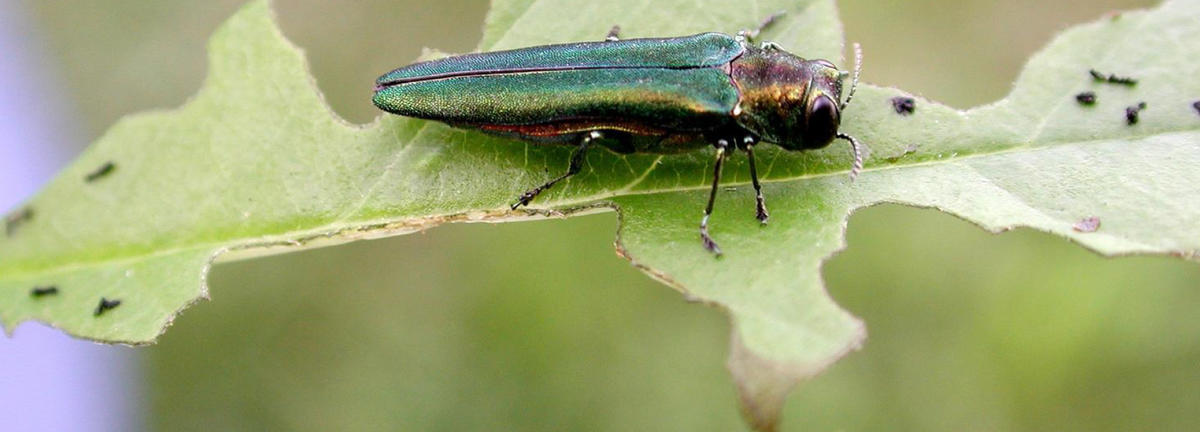
Background
The emerald ash borer (EAB) was discovered in Minnesota trees in 2009, and infestations have since been confirmed in 13 of 87 counties. This insect poses unique challenges to city governments who made ash trees a fixture in their urban infrastructure plans years ago. These trees have helped reduce air pollution, storm water runoff and cooling costs while increasing property values in local communities.
Today’s recommended treatment for an EAB-infested ash tree is injection of insecticide into the trunk. We also think that by treating enough trees in a local population with injection, it may be possible to achieve “herd immunity” against EAB. Herd immunity refers to the phenomenon through which treating a certain portion of a population confers protection to untreated members as well.
This project will focus on optimizing the protocol for treatment of Minnesota’s urban ash trees to protect as many trees as possible. Researchers will determine what percentage of trees must be treated to achieve EAB herd immunity, and assess the possible effects of treatment on bees and other local pollinators.
The information learned will inform local governments’ plans for safely and effectively protecting their ash on a citywide scale.
Research questions
- What proportion of trees must be treated to achieve herd immunity against EAB?
- Does a thorough biological survey suggest any danger of the treatments to non-target insects like bees and other pollinators, either through ingestion of plant material or contact with foliage?
Outcomes
During the 4-year study, the research team found that deploying the right types of insecticides to ash trees in the right ways can offer tree conservation and protection with minimal risk to non-target organisms such as bees that visit flowers and worms that decompose leaves. The research team recommends that when selecting a product to preserve urban ash trees, emamectin benzoate is a suitable and effective alternative to neonicotinoid-based products.
Publications
- Associational protection of urban ash trees treated with systemic insecticides against emerald ash borer (Frontiers in Insect Science, 2023)
- The Impact of Systematic Insecticides Against Emerald Ash Borer on Phenology of Urban Ash Trees (Journal of Economic Entomology, 2023)
- Associational protection and potential non-target effects of systemic insecticide treatments against emerald ash borer (PhD thesis, 2022)
- Effects of systemic insecticides against emerald ash borer on ash seed resources (Forest Ecology and Management, 2022)
- Strategic removal of host trees in isolated, satellite infestations of emerald ash borer can reduce population growth (Urban Forestry & Urban Greening, 2017)
Outreach and presentations
- Shade Tree Short Course
- Entomological Societies of Canada and America
- IUFRO Conference on Biological Invasions of Forests
- North American Forest Insect Work Conference
- Upper Midwest Invasive Species Conference
- USDA Interagency Annual Forum
- North Central Forest Pest Workshop
News and media
- Interview with Dora Mkabili Mwangola (video, University of Minnesota Department of Entomology, 2020)
Header image: "Emerald ash borer" by Leah Bauer, USDA Forest Service Northern Research Station, Bugwood.org is licensed under CC BY-NC 3.0